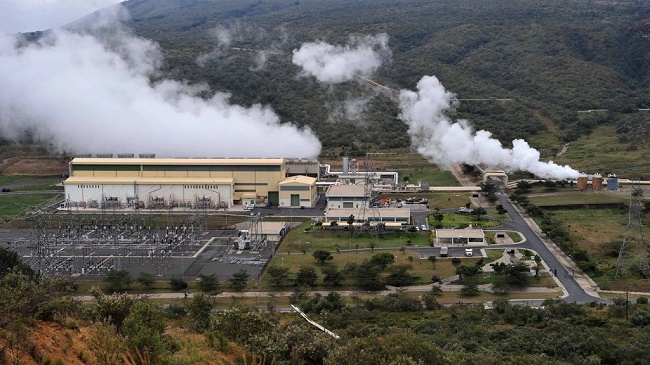Only 9% of the use of fossil energies, Kenya must be one of the rare countries of the African continent which respects the provisions of the Paris Agreement on the climate in the field of energy, those which consist in turning our backs on oil, gas and other sources of energy responsible for global warming. Little by little, Kenya is building its energy mix. In this package, there is the share of geothermal energy of which Naivasha is the symbol. You have to go there to better appreciate the vision and the investment. This is what PAMACC and AfricaonAir offered to journalists present in Nairobi as part of a training course on climate change. Didier Hubert Madafime reports

Seventy-six kilometre, it seems a little longer, when you’re sitting in a bus, right in the middle of a road wedged between a mountainside and a succession of landscapes, the most extraordinary, one than the other, regularly interspersed by a series of depressions to scare the bravest of truckers. It is this road that leads to Olkaria, the region of Naivasha, west of Nairobi, where the village entirely dedicated to geothermal energy is located. Olkaria is a land of extremes.
On the one hand, it has the administration and the team responsible for ensuring the proper functioning of this company managed by the KenGen company and on the other hand, distributed almost everywhere, small separate sites interconnected at each link of the system in an exceptional environment. The journalists, that morning, were well expected.
Geothermal energy and its history in Kenya
Here, it is the heat captured at 3,000 km that provides the energy generated by magmatic activities. The history of geothermal energy in Kenya is longer than the arm and dates back to the years 1954. Today KenGen operates five large geothermal power plants of 698 megawatts with 12 units. Geothermal energy is second only to hydroelectricity in Kenya’s energy mix.
As can be seen, Kenya today has a capacity of 2819 megawatts. The one who presented geothermal energy in Kenya to journalists, did not fail to emphasise “that Africa is the continent the enlightened month of all the others despite all its potential in the field of renewable energy.
“We must reverse the trend and geothermal energy is not the only energy capable of allowing African countries to get out of fossil fuels”.
And then, she insisted on the future which remains bright in view of the planned investments. In the short and long term, Kenya will move from an energy mix to an energy completely supplied by renewable energies.
The field visit
It is the same person who conducted the visit. The journalists took turns observing from afar the facilities located in the depression, from which emerge a column of white smoke, the production equipment and the heart of the production of geothermal energy. A visit that leaves in the hearts of journalists an unforgettable memory according to which the African continent can indeed break with the Indian sign of always being the last in class.
Geothermal energy, a path according to the IPCC to limit global warming
Kenya can be proud to be the African precursor of geothermal energy. This leading position has earned it the opportunity to soon host the African Centre of Excellence for geothermal energy, supported by the United Nations Environment Programme. Its neighbours also have significant potential but do not yet use it or use it very little. Only Ethiopia makes the difference and presents itself as the most ecological energy mix in the world.
In the West African sub-region, the use of geothermal energy is still timid or non-existent. However, in the latest report on global warming, the IPCC (Intergovernmental Panel on Climate Change) relies more on renewable energies to stem the effects of climate change.
In the words of Hoesung Lee, Chairman of the IPCC: “We are at a crossroads. The decisions we make now can ensure a liveable future. We have the necessary tools and know-how to limit global warming”.
Renewable energies, in particular geothermal energy, are among these tools, mentioned by the Chairman of the IPCC, and it is up to African countries to explore the possibility of using this energy to achieve low-carbon development.
Courtesy: PAMACC News Agency
